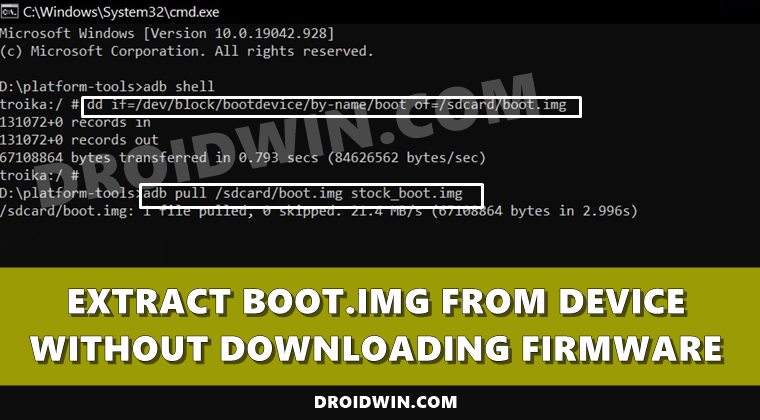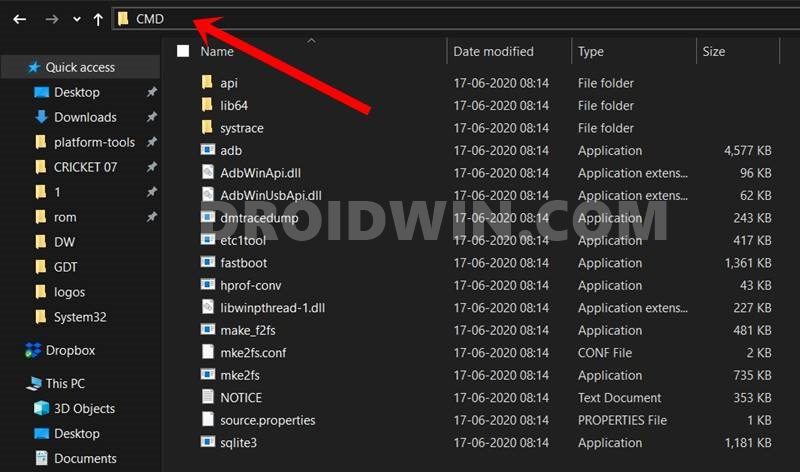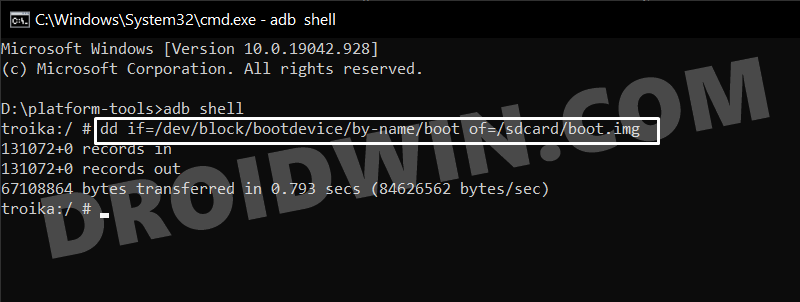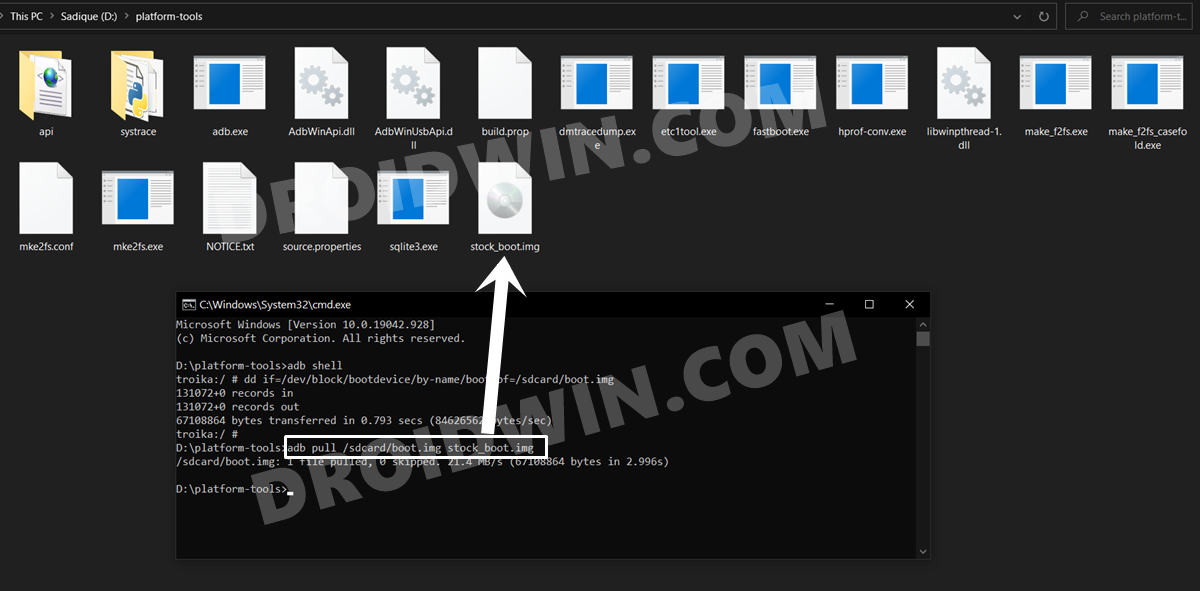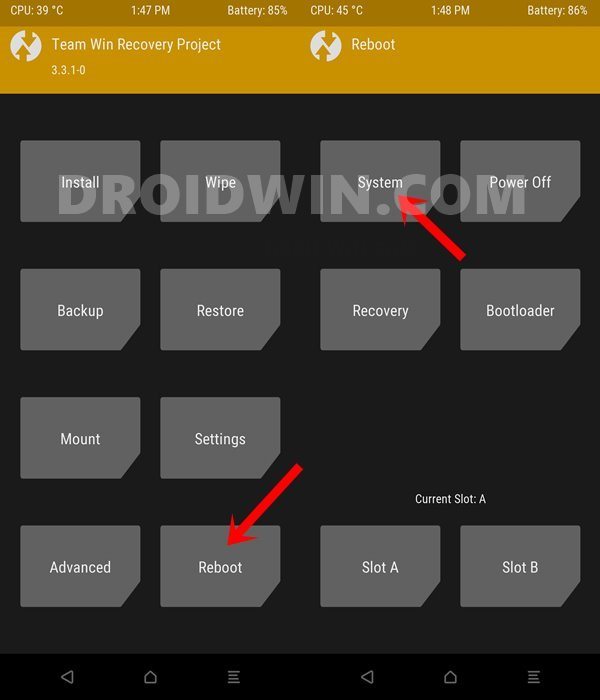Now there are two different methods through which you could carry out the said task. The first one is by directly flashing the Magisk App via TWRP. Then the second method involves extracting the boot.img file from the stock firmware, patching it via Magisk and flashing it via Fastboot. However, there are two major issues with this method. First off, it requires you to download the entire firmware, which not only exhausts your data but also leads to unnecessary time wastage. Then the second and more concerning issue is the fact that you need to get hold of the exact same firmware version that is currently installed on your device. If you end up flashing an incorrect build number’s boot.img then it would straightaway lead to a boot looped or bricked device. Hence as you might have noticed, both these issue arises from the firmware, one way or the other. But what if we take the stock firmware out of this picture? Well, as strange as it may sound, this is very much possible. Rather than downloading the firmware file, we would directly extract the boot.img file from the firmware that is already installed on your device. This way, you could be absolutely sure that the stock boot.img file is of the same version that is currently installed onto your device. So now that you are aware of the benefits of this method, let’s start off with the instructions to extract the boot.img file directly from your device without downloading the firmware.
Extract Boot.img Directly from Device Without Downloading Firmware
The below instructions are listed under separate sections for ease of understanding. Make sure to follow in the exact same sequence as mentioned. Droidwin and its members wouldn’t be held responsible in case of a thermonuclear war, your alarm doesn’t wake you up, or if anything happens to your device and data by performing the below steps.
Install Android SDK
First and foremost, you will have to install the Android SDK Platform Tools on your PC. This is the official ADB and Fastboot binary provided by Google and is the only recommended one. So download it and then extract it to any convenient location on your PC. Doing so will give you the platform tools folder, which will be used throughout this guide.
Enable USB Debugging
Next up, you will have to enable USB Debugging on your device. It will make your device recognizable by the PC in ADB mode. So head over to Settings > About Phone > Tap on Build Number 7 times > Go back to Settings > System > Advanced > Developer Options > Enable USB Debugging and OEM Unlocking.
Install TWRP Recovery
For this process, you would need to have the TWRP Recovery installed. If that is not the case, then please refer to our comprehensive tutorial on How to Install TWRP Recovery on Android. The guide also lists out the instructions to temporarily boot the device to TWRP. You may try that out as well if you are just looking to install TWRP for one-time usage.
Boot Device to TWRP Recovery
Extract Boot.img via TWRP
So this was all from this guide on how you could extract the boot.img file directly from your device without downloading the firmware. If you have any queries concerning the aforementioned steps, do let us know in the comments. We will get back to you with a solution at the earliest.
Extract Boot.img via a Script File
If you don’t wish to manually execute the commands in the CMD inside that we have mentioned above, then there’s an alternate way out. XDA Member KyoshiDev has created a script file that does exactly the same thing. You only need to launch the file and the script will do the rest of the work.
If you have any concerns regarding this file, then you may access its code over at GitHub and verify it yourself. Or even edit the Batch file via an advanced text editor and re-verify the contents of that file (see above image). As far as the prerequisite are concerned, they are exactly the same as before: Android SDK Platform Tools, Unlocked Bootloader, and TWRP Recovery installed on your device.
Download the Script from GitHub: OP7T-boot-patch-tool
Once you have downloaded it, extract it inside the platform-tools folder, boot your device to Fastboot, connect it to PC via USB, and finally launch the script file.
Conclusion: Do we Really Need this Method?
There is definitely a counter-argument with this process. The biggest of which is the fact that since this process requires TWRP, wouldn’t it be better to directly flash the Magisk ZIP via TWRP instead of carrying out the aforementioned steps? Well, this is indeed a genuine doubt. And there is no better way to answer this question than by sharing a real-life example of the same. So recently there were some issues with the boot partition which resulted in a boot looped device. The fix was fairly simple- to flash the stock boot.img file. And to get hold of this file, I no longer needed to download the entire firmware, rather the backup that I had made came in useful. Well, this is just one of the many perks of this method, there could be countless others. Do share your opinions with us in the comments about what you think of this guide to extract the boot.img file directly from your device without downloading the firmware.
About Chief Editor
